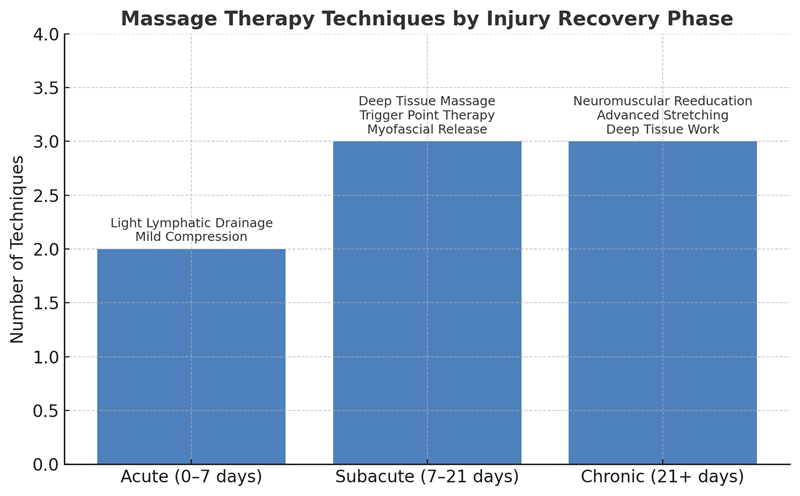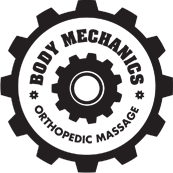Whether you’re a weekend warrior, a competitive runner, or a professional athlete, sports injuries can throw your routine into disarray. At Body Mechanics Orthopedic Massage, we specialize in helping active New Yorkers recover smarter, not just faster, through science-based massage therapy.
From reducing inflammation to restoring joint mobility, massage plays a crucial role in rehabilitating injured tissue, preventing re-injury, and supporting long-term performance. In this article, we break down the most effective techniques, real-world use cases, and why Body Mechanics is NYC’s go-to clinic for athletic recovery.
The Impact of Sports Injuries on the Body
Sports injuries affect more than muscles, they disrupt fascia, joint alignment, neuromuscular signaling, and circulation. Untreated, these injuries can lead to chronic dysfunction or compensatory patterns.
Common injuries include:
- Sprains, strains, and overuse injuries
- Tendonitis and bursitis
- Rotator cuff injuries
- Iliotibial (IT) band syndrome
- Shin splints and plantar fasciitis
- Low back and neck pain
The recovery process often requires an integrative approach, and that’s where orthopedic massage stands out.
How Massage Therapy Accelerates Recovery from Sports Injuries
1. Stimulates lymphatic flow and tissue health
Massage therapy stimulates blood flow to injured tissues, delivering oxygen and nutrients necessary for healing while flushing out inflammatory byproducts via the lymphatic system. According to the American Massage Therapy Association (AMTA), massage increases muscle temperature and tissue elasticity, both essential for repair.
2. Reduction of Muscle Tension and Scar Tissue
Soft tissue mobilization techniques such as myofascial release, deep tissue massage, and trigger point therapy help keep tissue supple and moving.
3. Pain Reduction via Neurological Pathways
Massage therapy stimulates the parasympathetic nervous system, decreasing stress hormones (like cortisol) and increasing endorphins. Techniques like neuromuscular therapy and cross-fiber friction block pain signals and support neuromuscular reeducation.
4. Restoration of Range of Motion
Post-injury stiffness is common. Massage techniques work to lengthen shortened tissues, improve joint mobility, and reduce protective guarding, helping restore optimal biomechanics.
Most Effective Massage Techniques for Sports Recovery
At Body Mechanics, our Sports Massage Therapy NYC sessions are tailored to your activity, injury, and stage of recovery. Here’s what we often incorporate:
1. Medical Massage (or Active Release)
Ideal for post-injury rehab, deep tissue massage works into the muscle fibers to mobilize tissues, release tension, and restore full muscle function.
2. Myofascial Release
Used in all of our programs, our Medical Massage Therapy NYC sessions apply this technique to reduce fascial restrictions that limit motion and cause pain. It’s especially effective for runners with IT band syndrome or swimmers with shoulder injuries, and is also a great option for anyone who feels ‘tight.’
3. Trigger Point Therapy
Targeting hyperirritable nodules in overused muscles with deep ischemic pressure, this therapy is key in treating referred pain and restoring muscle firing patterns.
4. Assisted Stretching & Cupping
Massage & Stretch NYC services improve joint mobility, lubricate the joints, and increase range of motion. Cupping helps lift tissue, making space around it, and promotes healing in injured areas.
5. Lymphatic Drainage Massage
For acute injuries with visible swelling, our Lymphatic Drainage NYC techniques help remove excess fluid, reduce inflammation, and prevent secondary tissue damage.
Common Sports Injuries We Treat with Massage
We frequently work with athletes recovering from:
- Hamstring and quad strains
- Ankle sprains
- Shoulder impingement and rotator cuff injuries
- Plantar fasciitis
- Runner’s knee (patellofemoral syndrome)
- Tennis and golfer’s elbow
- Lower back strain
We also provide customized support for clients undergoing post-surgical rehab or navigating repetitive strain from training overload.
Massage Therapy Techniques by Injury Phase

When to Get A Massage After a Sports Injury
Timing is everything. The effectiveness of massage therapy depends on matching the technique to the phase of your injury recovery:
- Acute Phase (0–7 days): During this early stage, the focus should be on gentle techniques like light lymphatic drainage and mild compression. These approaches help reduce swelling, calm the nervous system, and minimize discomfort without disrupting the healing tissues.
- Subacute Phase (7–21 days): As your body starts to repair, massage can become more focused. Techniques such as deep tissue massage, trigger point therapy, and myofascial release are effective at mobilizing tissue, reducing pain, and restoring range of motion.
- Chronic Phase (21+ days): When pain or restriction persists beyond three weeks, it’s considered a chronic condition or persistent. At this stage, more advanced methods like neuromuscular reeducation, deeper tissue work, and guided stretching are used to correct movement patterns, reduce pain, and work with any remaining issues, What to Expect at Body Mechanics Orthopedic Massage
Led by Beret Loncar Loncar, our licensed therapists combine orthopedic assessment with massage therapy tailored to your athletic goals and current limitations.
You can explore our Massage Therapy NYC overview or see what others have to say via our Massage Testimonials.
We also offer transparent Pricing and accept many HSA/FSA eligible plans.
Book Your Sports Injury Massage in NYC
Ready to get back in the game? Don’t let injuries sideline your progress. Whether you’re training for a marathon or just getting back to your gym routine, our team is here to support your comeback. Contact us to schedule your personalized sports recovery session with NYC’s leading orthopedic massage specialists.
